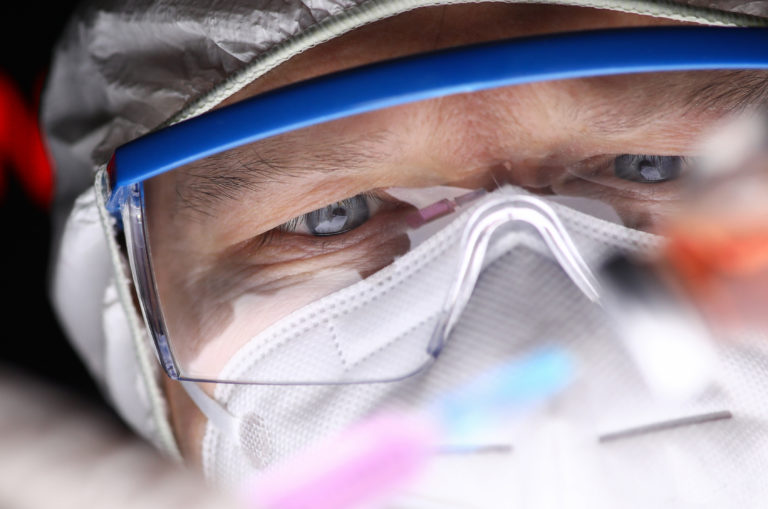With growing concerns about the coronavirus disease (COVID-19), it’s becoming clear that the real threat to hospitals and health systems throughout the country is the scarcity of resources, both personnel and physical resources like medical devices and single-use medical supplies. With a global nursing shortage on top of diminishing tests, personal protective equipment (PPE) and ventilators, healthcare organizations are forced to be more creative to make the most of the tools and supplies they have.
If your organization has access to a clinical communication and collaboration (CC&C) platform, there are actions you can take right away to adapt to these evolving circumstances to help keep staff and patients safe.
Deploy & Maintain A Virtual Incident Command Center
There’s a good chance your organization has already deployed its Incident Command Center in order to manage an influx of COVID-19 patients and better distribute supplies. But there are steps you can take within your EHR and within your communication platform to receive critical updates in real-time. The first thing is to deploy a virtual Incident Command Center.
Within your communication platform, you may decide to create a new unit, called “Virtual Incident Command Center,” so decision-makers and other critical actors can assign themselves. From there, the VICC can send broadcasts, engage in a group chat with the rest of the command center team and receive updates from frontline staff, instantaneously.
Consider creating Dynamic Roles for your VICC: Incident Commander, Supply Chain Commander, etc. Stakeholders can assign themselves to the role that best reflects their crisis job, and roles can change as the situation evolves.
But the VICC isn’t the only unit to create. Use your communication platform and your EHR to rename existing units that are shut down during the coronavirus pandemic. For instance, you can change the name of your Orthopedics floor to Trauma 2 in order to accommodate overflow COVID-19 patients.
Leverage one-to-many broadcasting capabilities to communicate instant updates to frontline staff, including news about supply shipments and distribution, number of confirmed COVID-19 cases in the region and changes to hospital protocol.
Leverage Existing Integrations
Provide links within your communication platform to frequently updated and reputable resources, such as the Centers for Disease Control and the World Health Organization. Providing easy access to launch points like these means staff can stay up to date on information like lists of known symptoms and sanitation recommendations.
If you can add those launch points within the platform, you may also be able to provide training videos or protocol overview videos to keep staff familiar with the change in priorities and educate a large number of people in a smaller window of time. This helps ensure that all staff on the front lines are adhering to proper protocol and are notified when protocols change.
Communication—at the Point of Care
There’s a good chance your organization uses an emergency response system to notify employees about crises or disasters. While it is sometimes effective to alert employees by email, home phone or office phone, as most of these emergency response systems do, during a pandemic like the coronavirus, it’s more effective to alert employees directly to their smartphones and other mobile devices. Healthcare employees are mobile workers first and foremost, so by sending alerts to their smartphones, you are raising the chances that staff will actually see the message.
The impact of bidirectional communication can’t be downplayed during a public health crisis like COVID-19. In order to make informed decisions—whether it’s about supply distribution, personnel distribution or otherwise—hospital leadership needs to be apprised of how things are running on the front lines. That’s impossible unless there is a way for providers and staff to bidirectionally communicate updates—up and down the ladder—with leadership.
Leverage your Hospital Incident Command System to appoint team leaders across the enterprise. Each team can communicate updates to their team lead, who then communicates updates to their department commander, who then communicates with the Incident Commander.
This bidirectional communication strategy is only possible with a CC&C platform that is enabled on every smartphone and every wheeled computer unit. Especially during an emergency like the coronavirus, hospital staff needs to be as mobile as possible, and a smartphone with a unified communication platform is an effective way to remove the common, daily barriers to collaboration.
Communication Is Key During COVID-19
While lack of supplies and resources may present a significant challenge to healthcare organizations during the coronavirus pandemic, there are some actionable steps they can take right now to keep staff, patients and families safe. Especially by leveraging a mobile communication and collaboration platform, hospital leadership can equip themselves and their colleagues with the tools they need to make a more positive impact.





